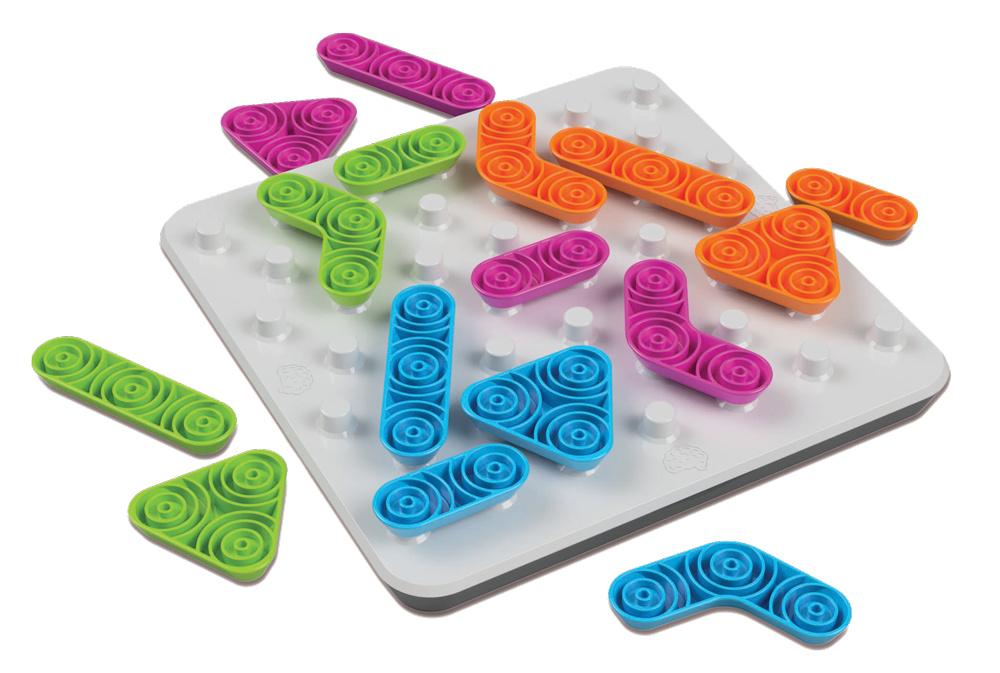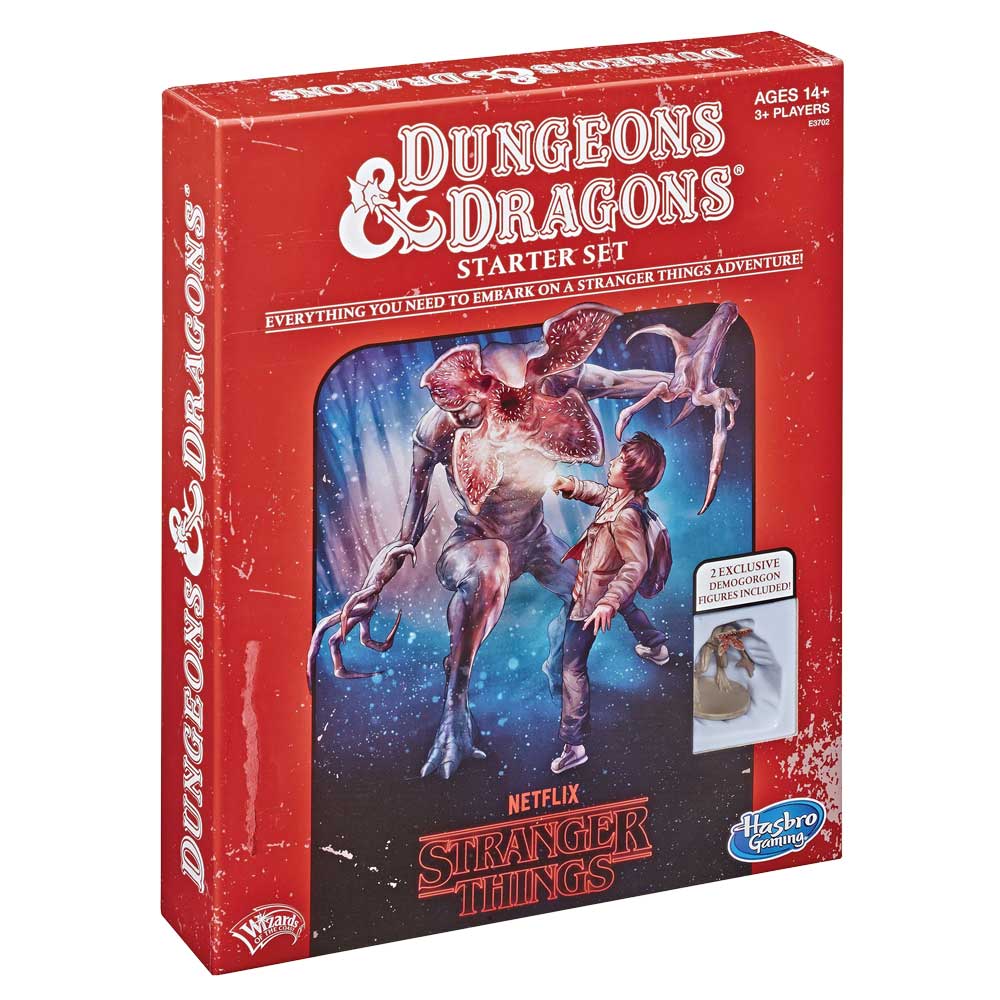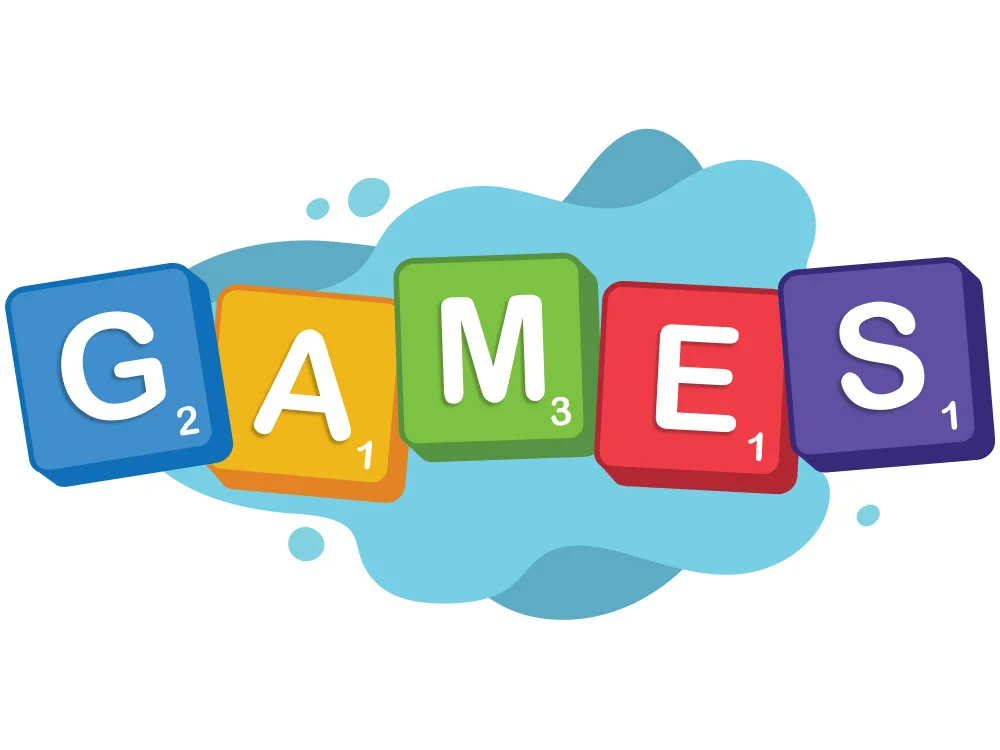By Mary Couzin, CEO and founder, Chicago Toy & Game Group
Board games remains a strong category, even though its sales are not rising at the incredible rate they have been for years. Global and U.S. game and puzzle sales last year declined 1%, as overall toy industry sales decreased by 2%, with sales still higher than 2016, according to the NPD Group.
And despite the loss of Toys “R” Us sales, statistics show that the games category is thriving. Successful tabletop game projects raised $165.3 million on Kickstarter last year, up 20% from 2017, according to ICO Partners. The number of successfully funded tabletop game projects also increased from 2,105 to 2,336.
Hobby game sales in the U.S. and Canada totaled $1.5 billion last year, down 3% when compared to the year prior, says ICv2. This decline was driven by a 14% decrease in collectible games, which was the only category of five to show a sales decline. Growth in the other four categories varied. Hobby card and dice games, for example, stayed flat, while role-playing games increased 18%. According to industry expert Lutz Muller, board games represent about 10% of toy sales worldwide and is the fastest-growing category after learning toys. North America and Europe account for one-sixth of the world’s population and two-thirds of all board game sales.
Numbers aside, new board game cafes are opening, articles and podcasts about board games are plentiful, and existing game conventions are growing while new ones — both local and regional — pop up weekly. Board games are indeed doing well!
I’ve been reporting on board game trends for many years, and this year I’m sharing major trends in the category according to a variety of knowledgeable colleagues in this market segment. Here’s what they had to say.
—
Ray Adler, vice president, global head of games, Mattel
A few things are standing out to me in the tabletop gaming space. The first is that speed to market matters. Some of the highest-volume games of the last year are items that capitalized on trends quickly. We’ve optimized our business so that we can move as fast as 60 days. The second trend I’m seeing is that brands matter and are resonating with consumers. As the games space gets increasingly cluttered, games that people trust and love that feature new innovation continue to outperform, such as our double-sided Uno Flip!, which we launched earlier this year. Finally, the way in which consumers are finding out about games continues to change rapidly, which means that the way marketers are thinking about the space is evolving with it, and it continues to be fascinating to see what everyone is doing to break through.

David Norman, president, Goliath Games North America
Consumers are buying higher-priced items that are worth it. “Worth it” is a combination of many factors in games, including [the consumer’s] experience with the game and the quality of materials. For instance, we’ve had a significant increase in sales of our high-end Sequence and Rummikub games. A second trend, affecting all toys and games, seems to go in the opposite direction: online price wars, 365 days a year. It seems that prices go down, everyone matches, and no one wants to blink and raise their price back up — madness! A third trend is increased innovation. [I’d like to give] a shout out to the inventor community for its extra focus on games. I’ve seen more great products in the last couple of weeks than I have in a long time.
Linda Schmidt, owner, Cat and Mouse
For kids, cooperative games are still king, but we’re also getting a lot of requests for games that incorporate social-emotional learning. In party games, our customers have gravitated toward the smart and clever (like Codenames and Concept) options, while gross or offensive party games have completely fallen by the wayside. Fairly abstract games that have attractive bits and can be enjoyed by casual and hobby gamers alike continue to be strong. This year, Tiny Towns has been a great addition to that genre. On the other end of the spectrum, Hasbro’s Dungeons & Dragons is bigger than ever. Many adults who want to play role-playing games have difficulty finding the time, though, so we’re seeing demand for games that tell a story but are easier to learn and quicker to play. For many of our customers, the shared experience definitely matters more than winning!
Tony Serebriany, director of inventor relations and international sales, USAopoly
Current trends in the board game industry will likely remain true for the next couple of years. Crowdfunding will remain strong as the retail landscape continues to fluctuate, but more so for mid-tier and smaller publishers as a means of getting games directly to fans. Bespoke and modernized gaming trends will likely see some growth as more people find ways to elevate gaming with customized experiences and materials. Live streaming services, such as Twitch, Instagram TV, and Facebook Live, will continue to flourish as content platforms, and also as a way for publishers, creators, and fans to share, learn, and engage. Story will continue to drive a broad mix of game development, as seen with the adventure games, escape room games, RPGs, and big-box releases from mid- to larger-sized publishers. It is an exciting time to be a part of this wonderful industry!
Peggy Brown, president, Peggy Brown Creative
Board games are still hot and attracting new publishers who want in on the action, and because the space is crowded, everybody is grappling for their own little chunk of turf that separates them from the pack. Whether it’s adult/crass, pre-preschool, or games based on the ever-more esoteric licensed property or weirdo theme, there still seems to be more territory to conquer with just the right item. As the economy booms for folks with big bucks, regular people are still scrapping for disposable income. Games keep feeding their appetites for cheap entertainment in a huge variety of genres, providing engaging off-screen interaction and good, old-fashioned togetherness. Now that the election year is approaching, both manufacturers and retailers will likely become more trepidatious in anticipation of tariffs, trade policy, and tax changes, but board games promise to remain strong business for the industry and a solid value for consumers.
Kim Vandenbroucke, inventor and owner, The Game Aisle
While we’ll always have the easy-on-rules, TV-promoted games, mass market is seeing more and more depth of play in the game aisle. The line between specialty and mass continues to blur with the popularity of tabletop games. One area of growth is family-friendly games that are light enough for younger players to understand, but offer enough strategy to interest parents and older teens. Roll-and-writes are super hot. We’re going to see more, with many line extensions building on already-popular game lines, such as Kingdomino, Imperial Settlers, and Patchwork. Many roll-and-writes include rules to play solo. Solo-play variants are great for consumers who love games but don’t have the time or flexibility to gather others around the table. Lastly, eye-catching artwork and fun titles are must-haves for all games, from mass market down to small Kickstarters.

Mark Carson, president and co-founder, Fat Brain Toys
One of the interesting trends I see in board games today is multi-generational play. The old-school approach of designing games for very narrow age ranges not only limits the market, but also unwittingly draws divisions in the family. Just as a 4-year-old doesn’t enjoy Trivial Pursuit, neither does an adult actually enjoy playing Candy Land. But we’re seeing more and more game concepts that have simple enough gameplay that a 6-year-old can appreciate, while also possessing a depth of play that older siblings, and even parents, find challenging and engaging. In this age of screen self-absorption, there’s really nothing more powerful than two or three generations of family gathered around the kitchen table engaged in a game together. Two perfect examples of this trend from Fat Brain are Morphy and GridBlock, which provide ample challenges for ages 6 to adult.
Thomas Kaeppeler, president, Ravensburger North America
Today, consumers are looking for escape, connection, and fun, and it’s not hard to understand why, given our always-full, usually-jam-packed lives. Trend-wise, nostalgia and retro remain as hot as ever and, when done well, are propelling familiar stories and characters of an immersive licensed game to the best-seller list. Consumers are also looking for activities that are worthy of their time — whether that’s an hour-long strategy game or a quick-play brain game. Just as nostalgia makes a deep connection and fuels joy, games that matter will always be in fashion. For example, brain games that offer both fun and learning — or games that allow parents and kids to have uninterrupted play — will remain evergreen for the toy industry. The longest-standing trend is games, puzzles, and toys that bring people together to disconnect from the schedules and screens and connect with one another.
Steven Schoenmaekers, executive vice president, Cartamundi
Digital Detox: In my mind, this is the growth driver for the games industry. Ten years ago, we were anxious about the impact of smartphones and video games. It’s wonderful to see millennials and families getting together to have a good time — to sit around a table and play games together. More and more people choose the joy of missing out (JOMO) and deliberately opt out of digital [activities] in favor of more meaningful experiences. Games are a huge help. These gamers are also increasingly in pursuit of an innovative, immersive game experience. Digital printing could play an important role, creating personalized and unique gameplay. One last trend that we see is the speed to market. The time between an idea and the launch of a game in the market has shortened substantially. Manufacturing board games domestically in the main global markets is helpful for our customers to fully catch such opportunities, often driven by social media trends.
Lisa Guili, general manager, Educational Insights
Board games themselves are the trend. Why? Because board games are “the great connector.”
This isn’t a new phenomenon, only one that some may find remarkable in this overly digital age. “That’s how I learned to play poker, from my grandpa,” said our director of product development, Heather Weeks, in one of our recent board game assessment discussions at Educational Insights. In our “always on” world, mom and dad never really leave the office — at least from a fully present standpoint. Board games, even if just for a short while, are a conduit to valuable, real-life bonding that is essential in all family and friend relationships. At Educational Insights, our most popular categories include preschool skill-building games, brain teaser games, and family-friendly party games. We’ve found surges in each of these areas because board games provide the ultimate “social network” for all generations.
Andrew Lupp, sales manager, PSI Distribution
As an overabundance of games continues to hit the market, three trends are emerging. First, enfranchised hobby gamers seem to be falling back on the lifestyle games that they have known and played for a long time — games that provide a sense of nostalgia, familiarity, and ownership with less risk of a negative experience for each dollar spent. Second, computer games and mobile apps are influencing industry design trends. Due to familiarity with console games and mobile apps, games that incorporate a narrative story arc, feature amazing imagery and leveling, and teach you how to play as you play are accessible and appealing to potential new gamers. Finally, we will continue to see a surge in games that rely on the unpredictability of human interaction and mental intangibles, where enjoyable gameplay relies on human socialization, connectivity, intuition, sensitivity, awareness, and perception.
Angela Holstrom, director of sales, MindWare
Finding the balance between following trends and maintaining our brand standards is something we are always focused on at MindWare. Fortunately, we have found that many recent trends have a natural place within our lines. The cooperative game category has proven to be consistently strong and, thanks to the cultural emphasis on kindness and social-emotional development, cooperative games by Peaceable Kingdom, a MindWare brand, are showing impressive growth. This strengthens our philosophy that “kids who play well together play well in the world.” We are also seeing a trend toward classic play patterns. MindWare is most known for Qwirkle, and we continue to expand that line — most recently with Qwirkle Rummy. The success of this winning brand coupled with a twist on classic rummy has far exceeded our expectations. We have also seen a growth in games geared toward adults, so we introduced the Shenanigames line, tamed it down, and created a line of games that adult players won’t be embarrassed to bring home to mom.
Wai Or, managing director, Longshore Limited
An important trend in games is to bring back the classics: from cult games, such as Fireball Island, and board games, such as 10 Days and Hare & Tortoise, to kids and action games, such as Looping Louie, Lucky Ducks, Mr Bucket, Pie Face, etc. There is a new generation of gamers who haven’t tried these great games before, and many parents are now also playing these classic games with their children for a nostalgic experience. In Asia, the culture is embracing playing games with friends and families, and we are also seeing a similar surge in bringing back classic titles.

Tanya Thompson, director, global product acquisition, games, Hasbro
We know that games bring families and friends of all ages and generations together for fun, meaningful social interactions. While content-driven games are popular for adults looking to have a laugh together, millennials are playing classic games, such as Jenga and Connect 4, in coffee shops and other social settings. Entertainment properties, such as Stranger Things, have allowed us to introduce new versions of traditional games while making games like Dungeons & Dragons mainstream. Action games (board games with a toy component to them) are also very popular for families who are looking for simple-to-understand games that allow them to spend quality face-to-face time together as they play. Our goal is to consistently provide families and friends with gaming experiences that are not only fun to play with, but also fun to watch and share. We are constantly monitoring and analyzing new trends to determine how we can incorporate them into the gaming aisle in the future.
Mary Couzin: One trend not mentioned is the increasing conversation about the lack of diversity among game designers. Of my list of more than 3,300 independent professional toy and game designers, many of whom attend the ChiTAG Inventor & Innovation Conferences, about 7% are female. A study of the top 200 Board Game Geek designers showed that only 2.4% are women, and 4.1% are non-white males. Let’s hope that, a year from now, these numbers increase and that we will be doing more than talking about it.
In the past, I’ve compared the board game market to the culinary market. Sometimes fast food hits the spot, but other times you want a rich, experiential dinner or a classic family supper. It is the same with games. And now, the vast array of board games on the market is almost overwhelming, with more than 5,000 coming to market each year. On the upside, like food, board games are best experienced with others, and any time more people come together around a table, we discover we have more in common than not.
[author] [author_image timthumb=’on’]https://toybook.com/wp-content/uploads/2019/08/Mary_Headshot_New.jpg[/author_image] [author_info]
Mary Couzin is CEO and founder of the Chicago Toy & Game Group, whose mission is to promote the importance of play by hosting consumer, fashion, inventor, and media events, including Chicago Toy & Game Fair, Inventor and Innovation Conferences, Toy & Game Innovation Awards, PlayCHIC Fashion Show, Young Inventor Challenge, and more.
[/author_info] [/author]
This article originally appeared in the July/August 2019 issue of the Toy Book.

